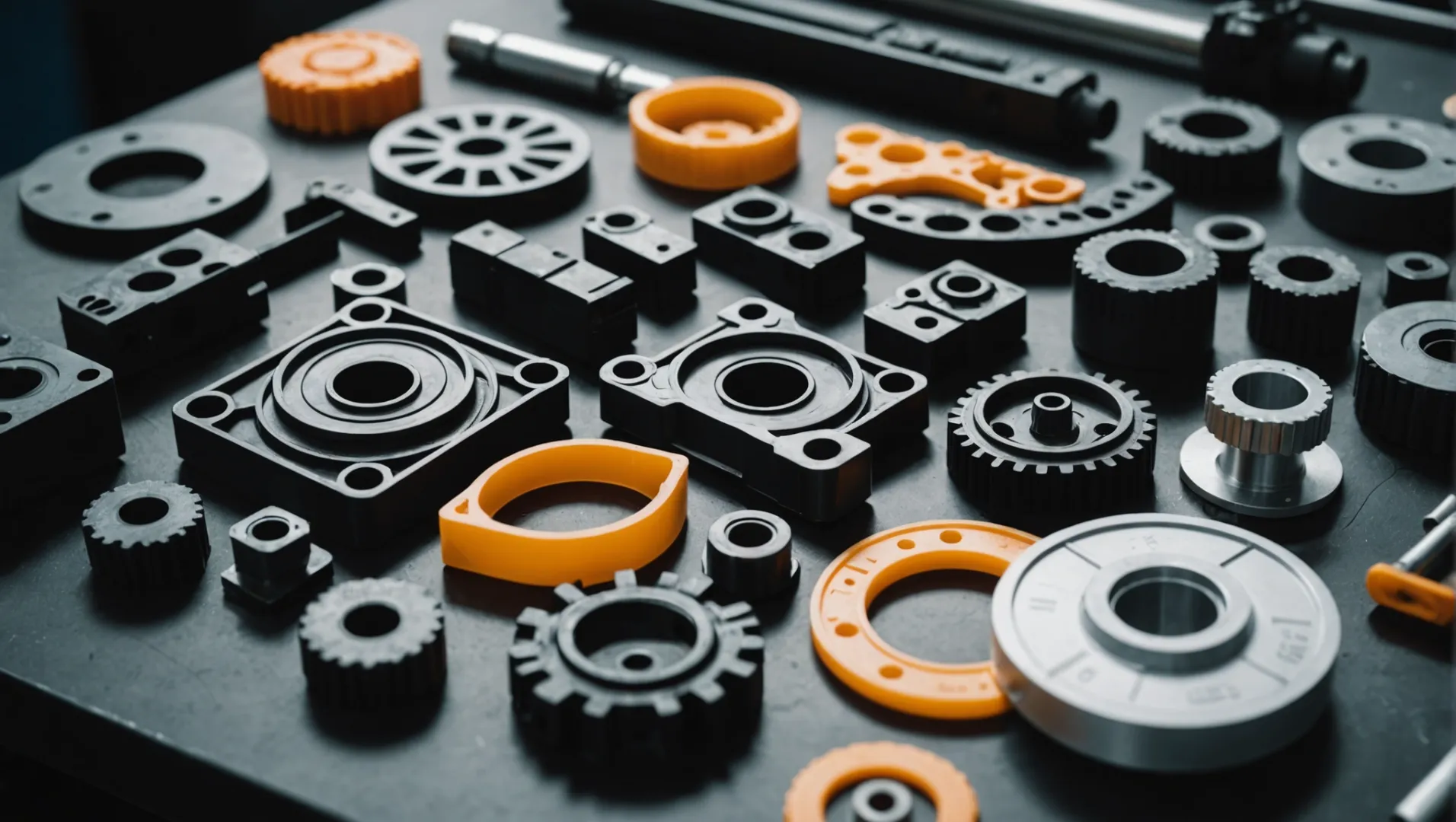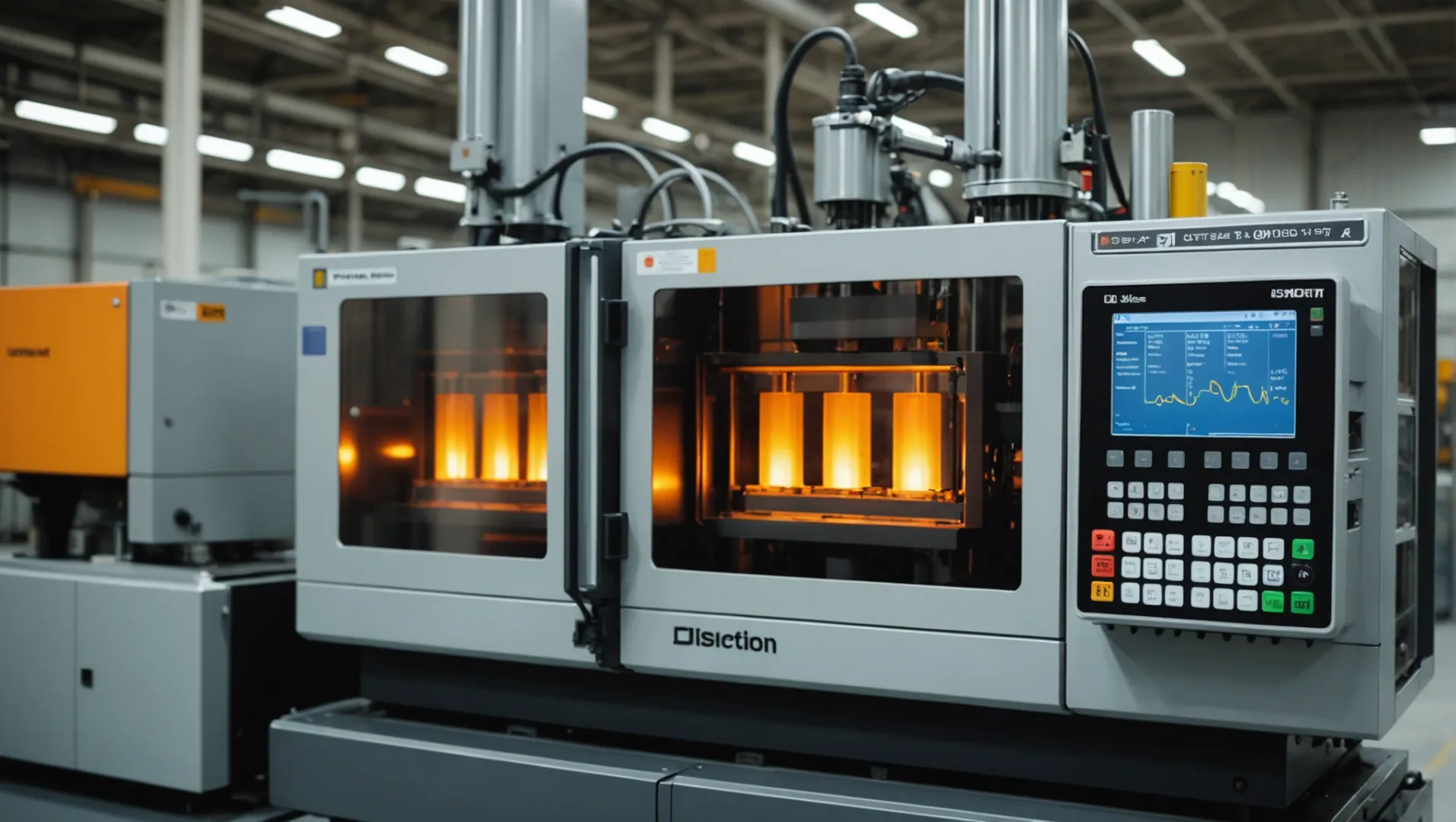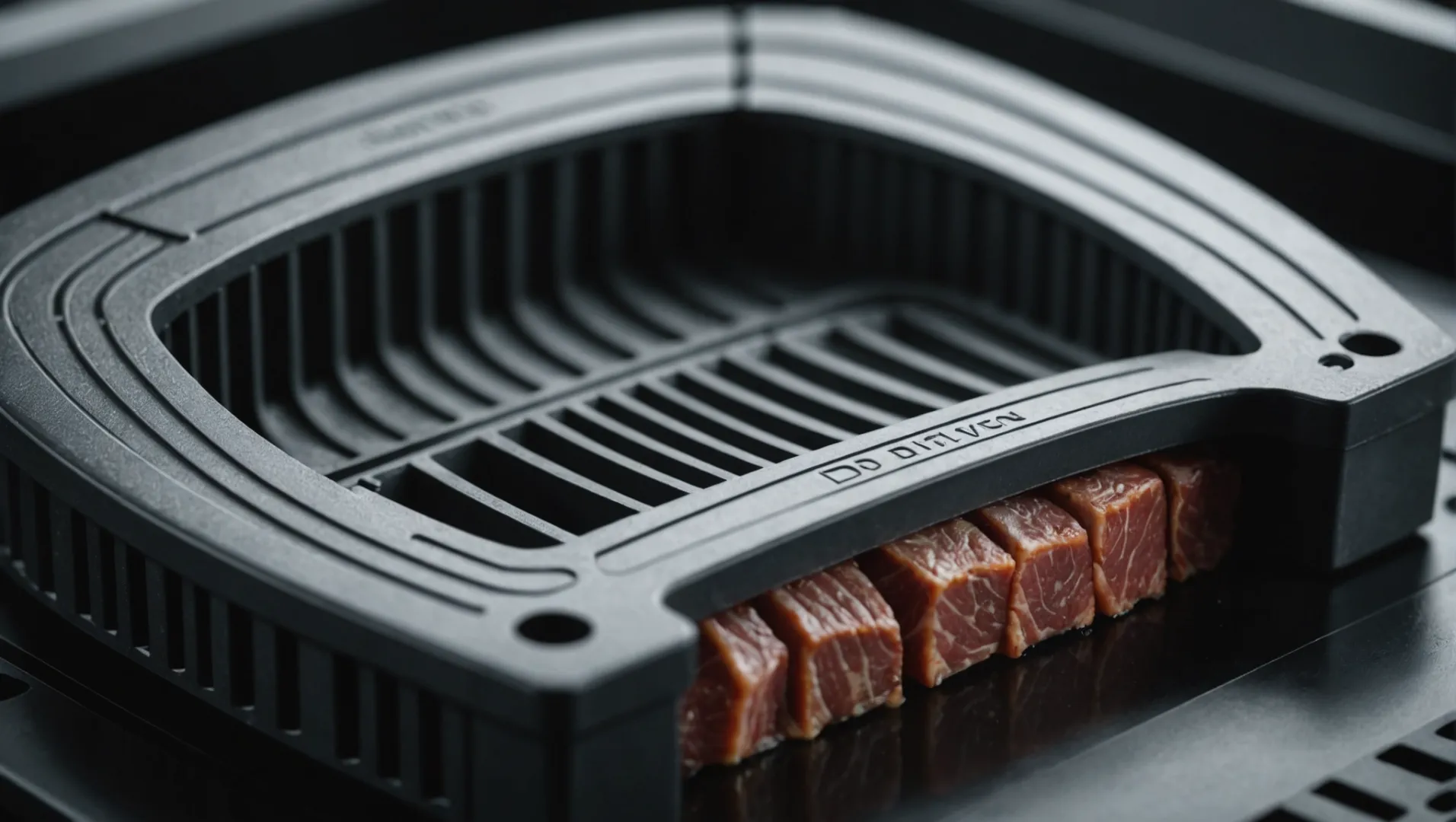
Crafting the perfect plastic injection molded part requires a delicate balance between rigidity and toughness.
To balance rigidity and toughness in plastic injection molded parts, engineers must consider material selection, structural design, and process parameters. By optimizing these factors, they can enhance the performance and reliability of the final product.
While understanding the basic principles is essential, diving deeper into each component of this balancing act reveals insights that can significantly improve the quality of your designs. Let’s explore these key aspects in detail.
Polycarbonate offers both high stiffness and toughness.True
Polycarbonate is known for its high stiffness and moderate toughness, making it suitable for durable applications.
What Are the Best Materials for Balancing Stiffness and Toughness?
Choosing the right material is crucial in achieving a balance between stiffness and toughness in plastic parts. This ensures durability and functionality.
To balance stiffness and toughness in materials, consider polycarbonate for high stiffness and toughness, or modify polypropylene for improved performance. Material choice must align with application demands.

Understanding Material Properties
Choosing the right material is pivotal for balancing stiffness and toughness in plastic parts. For example, polycarbonate (PC) offers high stiffness with commendable toughness, making it suitable for applications that demand both durability and strength. In contrast, polypropylene (PP) is known for its good toughness but has relatively lower stiffness, which can be addressed by modifying its composition.
| Material | Stiffness (Elastic Modulus) | Toughness (Elongation at Break) |
|---|---|---|
| Polycarbonate | High | Moderate |
| Polypropylene | Low | High |
Studying parameters like elastic modulus and yield strength helps evaluate a material’s properties effectively. These measurements guide engineers in selecting materials that meet specific application requirements, ensuring optimal performance.
Material Modification
Modifying materials by adding fillers, reinforcing agents, or toughening agents is a common practice to enhance performance. For instance, incorporating glass fibers into a polymer matrix can significantly increase stiffness while maintaining adequate toughness. Alternatively, adding elastomers can improve toughness without compromising stiffness.
It is essential to optimize the content and distribution of these additives. This ensures a balance between stiffness and toughness while considering impacts on other properties such as processing performance and aesthetics.
Considerations for Material Selection
When selecting materials, understanding the mechanical properties is crucial. Engineers should assess:
- Elastic Modulus: Indicates the material’s ability to resist deformation under stress.
- Yield Strength: The stress at which a material begins to deform plastically.
- Elongation at Break: Measures ductility, indicating how much a material can stretch before breaking.
By examining these factors, you can choose materials that offer the desired balance of stiffness and toughness for your specific application needs.
In conclusion, selecting the right materials involves a comprehensive understanding of their inherent properties and potential modifications. This ensures the production of high-quality plastic parts that meet performance expectations across various applications.
Polycarbonate is stiffer than polypropylene.True
Polycarbonate has a higher elastic modulus than polypropylene.
Adding elastomers increases stiffness in polymers.False
Elastomers improve toughness but do not increase stiffness.
How Does Structural Design Influence Plastic Part Performance?
Structural design is pivotal in determining the performance of plastic parts. It affects durability, appearance, and functionality, making it a critical aspect of engineering.
Structural design influences plastic part performance by optimizing wall thickness, rib placement, and fillet design. These elements enhance stiffness, reduce stress concentration, and improve toughness, resulting in more reliable components.

Importance of Wall Thickness
Wall thickness plays a crucial role in balancing stiffness and toughness. Thicker walls can increase stiffness but may compromise toughness. Engineers must determine the optimal thickness based on material properties and application requirements. Uniform wall thickness prevents stress concentration and warping, enhancing overall performance.
| Wall Thickness | Stiffness Increase | Toughness Impact |
|---|---|---|
| Thick | High | Low |
| Thin | Low | High |
Strategic Rib Design
Ribs are essential for reinforcing plastic parts without significantly adding weight. They improve stiffness with minimal impact on toughness. By carefully designing rib height, width, and spacing, engineers can ensure that parts withstand stress while maintaining their structural integrity.
- Height: Tall ribs increase stiffness but might affect aesthetics.
- Width: Wide ribs distribute load effectively.
- Spacing: Proper spacing prevents stress concentration.
Fillet Design for Stress Reduction
Fillets reduce stress concentration at corners, enhancing toughness and preventing cracks. Larger fillet radii help disperse stress, contributing to better durability. Additionally, they improve appearance by eliminating sharp edges and facilitating a smoother finish.
Considerations for fillet design include material flow during molding and the intended use of the part.
Incorporating these structural design principles can significantly impact the performance and longevity of plastic parts. For further insights into optimizing these aspects, explore rib design strategies1 and fillet implementation techniques2.
Thicker walls increase stiffness in plastic parts.True
Thicker walls enhance stiffness but can reduce toughness.
Tall ribs decrease the stiffness of plastic parts.False
Tall ribs increase stiffness, though they may affect aesthetics.
Which Process Parameters Are Crucial for Optimizing Plastic Parts?
Optimizing process parameters is pivotal in producing high-quality plastic parts with the right balance of properties.
Key process parameters include injection temperature, pressure, cooling time, and mold design. Adjusting these factors helps achieve desired stiffness and toughness in plastic parts.

Injection Temperature and Pressure
Injection temperature and pressure are critical in determining the molecular orientation and crystallinity of the material. A higher injection temperature can increase the material’s fluidity, reducing internal stress but potentially lowering stiffness. Conversely, the right injection pressure ensures density and dimensional accuracy but excessive pressure might over-orient the molecules, compromising toughness.
The table below outlines typical effects of varying injection temperatures and pressures:
| Parameter | Effect on Stiffness | Effect on Toughness |
|---|---|---|
| High Injection Temp | Lowers stiffness | Enhances toughness |
| Low Injection Temp | Increases stiffness | Reduces toughness |
| High Injection Pressure | Increases stiffness | Reduces toughness |
| Low Injection Pressure | Lowers stiffness | Enhances toughness |
Cooling Time Optimization
Cooling time is another crucial parameter that affects the part’s final properties. Insufficient cooling can lead to residual stress, impacting performance and stability. On the other hand, excessive cooling might increase crystallinity, thereby raising stiffness but reducing toughness.
Balancing cooling time involves understanding the material characteristics and part dimensions. The right cooling strategy optimizes mechanical properties while minimizing defects such as warping or cracking.
Mold Design Considerations
The mold design itself plays a significant role in the optimization of plastic parts. A well-designed mold ensures uniform cooling, reducing internal stress and preventing warping. Additionally, surface finish and demolding angles impact the appearance and structural integrity of the part.
Smooth mold surfaces reduce friction during demolding, enhancing surface quality, while appropriate angles facilitate easier part release without introducing stress concentrations.
Understanding these parameters can significantly enhance the performance of injection molded parts3. Proper manipulation of these factors ensures that plastic parts meet desired specifications for various applications.
High injection temperature enhances toughness.True
A higher injection temperature increases fluidity, enhancing toughness.
Low cooling time increases stiffness.False
Insufficient cooling leads to residual stress, not increased stiffness.
How Can Rib and Fillet Design Enhance Part Durability?
Designing plastic parts with ribs and fillets enhances durability by managing stress and improving load distribution.
Rib and fillet design enhances part durability by increasing stiffness without compromising toughness, while reducing stress concentrations. Ribs provide structural support, and fillets help in stress distribution at corners, preventing cracks and failures.

Rib Design for Enhanced Stiffness
Rib design is a crucial aspect of improving the durability of plastic injection molded parts. By adding ribs, engineers can increase the stiffness of a part without significantly adding to its weight or material costs. This is particularly beneficial in applications where weight reduction is essential, such as in automotive components.
-
Optimal Rib Layout: The placement and orientation of ribs should align with the direction of the applied loads. For example, in a flat panel subjected to bending, ribs perpendicular to the bending direction can substantially increase stiffness.
-
Rib Proportions: Typically, the rib thickness should not exceed 60% of the nominal wall thickness to prevent sink marks on the surface of the part.
-
Height and Spacing: The height-to-thickness ratio of ribs often ranges from 2:1 to 4:1. Spacing should be sufficient to avoid warping or distortion during cooling.
Learn more about effective rib design strategies4 to ensure your parts can withstand rigorous conditions.
Fillet Design for Stress Distribution
Fillets play a pivotal role in reducing stress concentration at sharp corners, thereby enhancing the toughness of the part. A properly designed fillet smooths transitions between surfaces, distributing stress more evenly across the part.
-
Fillet Radius: A larger fillet radius reduces the risk of cracking under stress. Generally, a radius that is at least 0.25 times the wall thickness is recommended for most applications.
-
Impact on Aesthetics: Apart from mechanical benefits, fillets improve the aesthetic appeal by eliminating sharp edges and providing a smoother finish.
-
Integration with Mold Design: Fillet design should be considered early in the mold design process to avoid complications during demolding.
For further insights, explore how fillet design can improve part longevity5.
Balancing Rib and Fillet Features
The synergy between ribs and fillets is crucial for achieving a well-balanced design that optimizes both stiffness and toughness. The integration of these features needs careful planning:
-
Avoid Overdesign: Excessive ribbing or overly large fillets can lead to increased material usage and potential processing issues.
-
Simulation Tools: Utilizing simulation software to predict stress distribution and deformation can aid in fine-tuning rib and fillet designs before moving into production.
By implementing thoughtful rib and fillet designs, manufacturers can produce durable plastic parts that perform reliably in various environments. Explore advanced techniques in CAD modeling6 to achieve precision in your designs.
Ribs increase part weight significantly.False
Ribs enhance stiffness without adding significant weight, crucial in lightweight applications.
Fillets reduce stress concentration at corners.True
Fillets distribute stress evenly, preventing cracks and enhancing part toughness.
Conclusion
Balancing stiffness and toughness in plastic injection molded parts requires careful consideration of materials, design, and processes. Apply these strategies to enhance product quality and meet specific application demands.
-
Discover how ribs enhance stiffness without adding weight.: A pattern of ribs is equivalent to coring out unneeded material, leaving only the rib support system—it also reduces the weight and cost of the part. ↩
-
Learn about reducing stress concentration with fillets.: This guide helps you distinguish between fillets and chamfers, understand the design principles, and apply excellent corner modifications. ↩
-
Explore how adjusting parameters influences part quality and performance.: Mold temperature is the most important variable in injection molding – regardless of the plastic being molded, basic wetting of the forming mold … ↩
-
Discover detailed methods for enhancing stiffness through strategic rib design.: Build strength into your part design by incorporating strategic support features and selecting the right thermoplastics · Plastic Rib Design. Ribs are thin, wall … ↩
-
Understand how fillets reduce stress concentration and prevent cracks.: Chamfers and fillets help reduce stress concentration, thus decreasing the likelihood of material breakage in these areas and extending the … ↩
-
Explore precise CAD modeling techniques for optimal rib and fillet designs.: SOLIDWORKS has a plethora of tools for designing and modeling injection molded plastic … ↩






